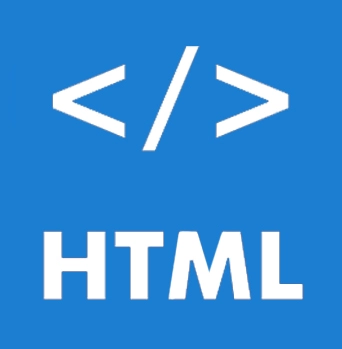


In this HTML tutorial you will get to know about HTML, Structure of the HTML Page, History of HTML, Versions of HTML, Features of HTML.
HTML is an abbreviation for HyperText Markup Language. HTML is the fundamental building block of the World Wide Web. Hypertext is the text presented on a computer or other electronic device that contains references to other text that the user can access immediately, usually with a mouse click or keypress. In addition to text, hypertext may include tables, lists, forms, images, and other presentational elements. It is a simple and adaptable format for sharing information over the Internet. Markup languages use sets of markup tags to characterize text elements within a document, giving web browsers instructions on how the document should appear. HTML was created in 1990 by Tim Berners-Lee. He is also referred to as the "Father of the Web." The World Wide Web Consortium (W3C) took over responsibility for maintaining HTML specifications in 1996. HTML was also recognized as an international standard (ISO) in 2000. HTML5 is the most recent version of HTML. HTML5 allows for faster and more robust web development.
Let us just discuss what is Hypertext Markup Language (HTML), and Web page.
HyperText is an abbreviation for "Text within Text." A hypertext is a text that has a link. When you click on a link that takes you to a new webpage, you have used hypertext. HyperText is a method of connecting two or more web pages (HTML documents).
A markup language is a computer language used to apply style and formatting principles to text documents. Markup language enhances the interactivity and dynamic nature of the text. It can convert text into graphics, tables, links, and so forth.
A web page is a document that is typically produced in HTML and then translated by a web browser. An URL can be used to locate a web page. A static or dynamic Web page can exist. Static web pages may be created entirely with HTML.

<!DOCTYPE>: It either defines the document type or instructs the browser on the HTML version.
<html>: It is the root tag of the HTML document. This element notifies the browser that the document is HTML. The text between the HTML tags explains the web page. Except for <!DOCTYPE>, is a container for all other HTML components.
<head>: It should be the first element within the <html> element, and it should include the metadata (information about the document). It has to be closed before the body tag is being opened.
<title>: As the name implies, it is used to put the title of that HTML page at the top of the browser window. It must be inserted within the head tag and immediately close. This is an optional element.
<body>: Text between body tags describes the visible body content of the page to the end-user. This element includes the HTML document's primary content.
<h1>: A webpage's first level heading is desHistory of HTML
In the late 1980s, Tim Berners-Lee, a physicist working as a contractor at CERN, designed a system for CERN researchers. He proposed an internet-based hypertext system in a memo in 1989. Tim Berners-Lee is widely regarded as the "Father of HTML." Tim proposed a text named "HTML Tags" in late 1991 as the first available explanation of HTML. HTML5 is the most recent form of HTML, as we shall see later in this course.
Since the introduction of HTML, there have been several HTML versions on the market; a quick overview of each HTML version is discussed below:
HTML 1.0: The earliest version of HTML was 1.0, which was introduced in 1991. This version of the HTML language was comprised of only the basic or essential elements required.
HTML 2.0: This was the next version of HTML, which was launched in 1995, and it was the standard language version for website design. HTML 2.0 could allow more functionality such as form-based file upload, form components such as text box, selection button, and so on.
HTML 3.2: The World Wide Web Consortium (W3C) released HTML 3.2 in early 1997. This version supported the table creation as well as the introduction of more options for form components. It can also handle a web page that contains complicated mathematical equations. Until January 1997, it was an official standard for any browser. It is now only practically supported by the majority of browsers.
HTML 4.01: In late 1999 HTML 4.01 was introduced, and it is the most stable version of the HTML language. This is the current official standard, and it includes support for Cascading Style Sheets (CSS) and scripting for different multimedia components.
HTML5: HTML5 is the most recent version of the HyperText Markup Language (HTML). In January 2008, the first edition of this version was released. W3C (World Wide Web Consortium) and WHATWG (Web Hypertext Application Technology Working Group) are two major organizations participating in the creation of the HTML 5 version, which is still in the development process.